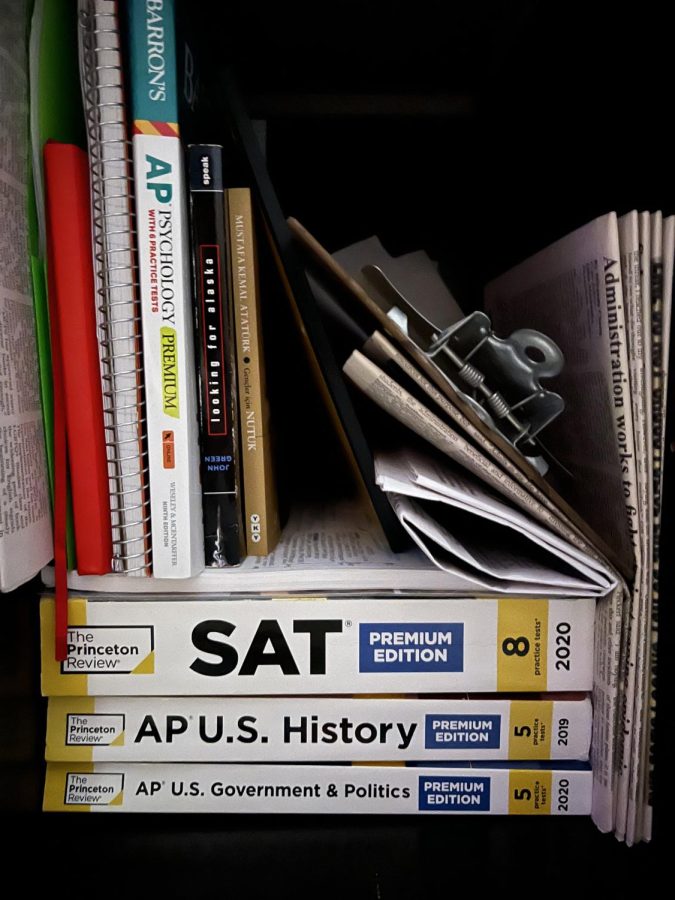SAT introduces a digital option for future exams
Review books are extremely helpful in preparing for the SAT, and with new changes to the standardized test, success rates for good scores are more likely.
March 17, 2022
A crucial part of the college application process before the emergence of a global pandemic is transforming to be unrecognizable from its previous design. New changes to the SAT have taken a turn for the better — or is it worse?
Starting in 2024 for all U.S. students and 2023 for international ones, the new SAT format will consist of a shortened and digital version of the original test.
Some changes include calculators being allowed for the entire duration of the math section and cutting down the total testing time from three hours to two. Also, shorter reading passages will be implemented.
“My parents always made the SAT a big deal ever since I was in middle school,” senior Serena Shi said. “They constantly reminded me that was going to make or break my way into college, which always stressed me out.”
Before test-optional was widely introduced by the majority of colleges and universities in the U.S., the SAT was considered a major part of a college application. The SAT performed as a key factor of admission for a lot of prestigious academies; overlooking the exam and its stress factors of competition, while keeping up with school simultaneously was always a challenge.
“The most challenging aspect of the SAT was the reading section. The questions required much more thinking and were built to trick you more than math was, and now that the passages are being shortened it’ll only make it easier to get the score you want,” senior Kayla Song said. “Regardless, I feel like optional test scores are a good thing, because a person shouldn’t be determined by a sole number. A lot of accomplishments like extracurriculars count for more.”
The impact of the COVID-19 pandemic has transformed the way colleges tackle applications immensely. Preparing for the standardized test while managing virtual learning was a challenge.
“Test-optional is a great idea because someone with a not so great score could have so much more to them than just that. To simplify the SAT gives everyone an equal playing ground to enhance their application” Shi said. “I wish they could stress that your results won’t affect your admission in a heavy negative way. Maybe then students will feel more confident to send their scores.”
After years of debate over the effectiveness of the SAT in measuring knowledge on a standard level, new changes to the SAT are closing the gap between the importance of a test score on an application.
“I really dislike the major changes, not because I’m upset I couldn’t take a shorter version,” Shi said.”I think the original exam was a great way to measure someone’s ‘baseline intelligence’ and shortening it might not give colleges an accurate representation of that.”
As time passes by, the heavy weight put on an SAT test score is beginning to steadily decline, as students will no longer have to attend testing centers for multiple hours on end. College Board quite literally hits home with the latest alterations to the SAT.
“These major changes are just setting the test up to be unimportant and not considered in the future, which is okay. Future generations of students shouldn’t have to go through the stress we went through,” Song said.


